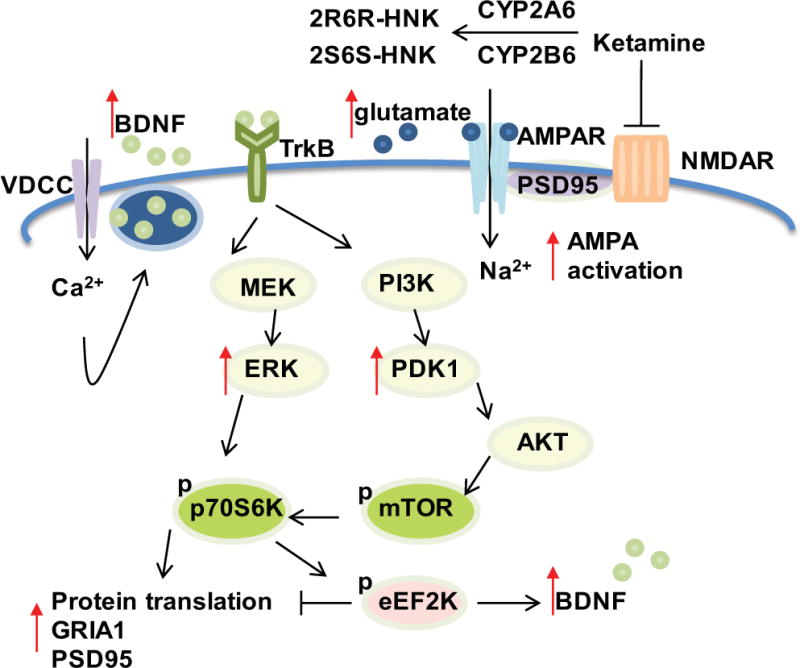Figure 1.

Schematic diagram illustrating ketamine mechanism(s) of action. CYP2A6 and CYP2B6 are major enzymes responsible for ketamine metabolism. Ketamine is an NMDA receptor (NMDAR) antagonist and the active ketamine metabolites (2R,6R-HNK and 2S,6S-HNK) also reportedly contribute to antidepressant effects through the activation of AMPA receptors (AMPRs). Ketamine induces glutamate release. Glutamate in turn binds to AMPARs to induce depolarization as well as sodium (Na2+) and calcium (Ca2+) influx through the AMPA receptors and L-type voltage gated calcium channels (VDCCs), respectively. This results in increased brain-derived neurotropic factor (BDNF) release from synaptic vesicles. BDNF binds to tyrosine kinase receptor B (TrkB) with high affinity, which leads to activation of both the ERK and AKT/mTOR pathways, increasing synaptic protein translation and GRIA1 trafficking to the cell membrane.
